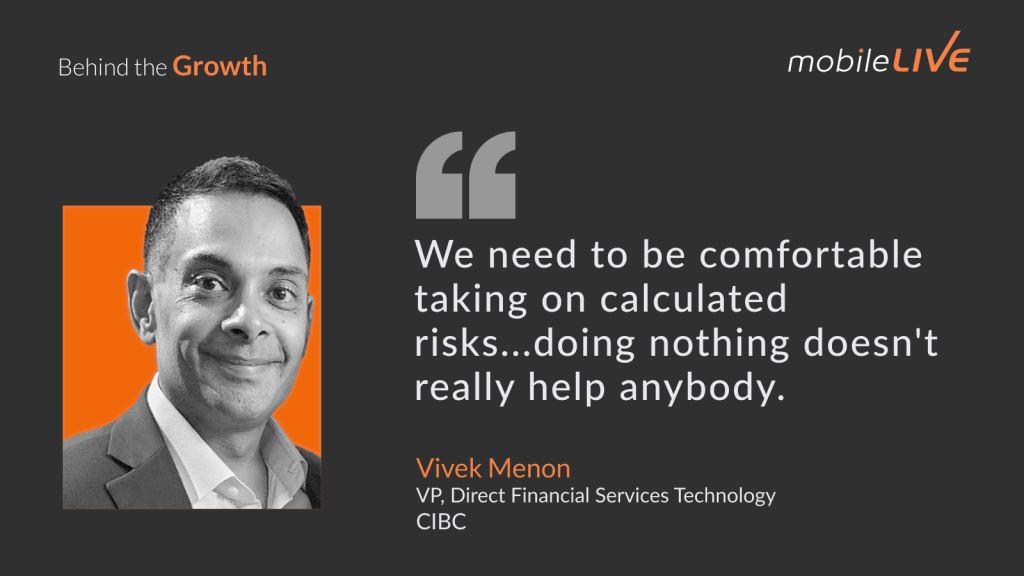Key Insights
Bridging Technology and Business for Success
In modern financial institutions, the seamless integration of technology and business is essential for driving exceptional results. Effective communication and collaboration between tech teams and business units enable more informed decision-making and quicker execution. This integrated approach helps address both operational challenges and strategic goals. By working closely together, technology and business leaders can leverage their combined expertise to innovate and stay competitive. This partnership fosters a culture of mutual understanding and shared objectives, ultimately leading to greater organizational success.
The Importance of Calculated Risk-Taking
Taking calculated risks is crucial for driving digital transformation in legacy financial institutions. Modernizing outdated systems often involves significant risks, but delaying these decisions can hinder growth and competitiveness. Leaders must be willing to evaluate the potential benefits and strategically plan their approach to mitigate risks. Successfully navigating these challenges requires a thorough understanding of both the technology and the business landscape. By embracing calculated risks, organizations can overcome legacy barriers, improve operational efficiency, and drive long-term growth.
Continuous Learning as a Competitive Advantage
Staying ahead in the rapidly evolving technology landscape requires a commitment to continuous learning. Being curious and proactive in exploring new technologies allows individuals and organizations to remain competitive. Hands-on experimentation and early adoption of emerging technologies provide practical insights that theoretical knowledge alone cannot offer. Engaging with industry peers and maintaining an open dialogue about new advancements can also enhance understanding and application. This culture of continuous learning ensures that organizations are well-prepared to leverage new technologies for business growth and innovation.

Episode Highlights
The Power of Hands-On Learning
Hands-on learning is essential for staying competitive in technology roles. By actively engaging with new technologies and solving real-world problems, individuals can rapidly acquire valuable skills. This approach also enables professionals to adapt quickly to changing industry demands. Early experimentation and problem-solving foster a deep understanding of technological concepts and practical applications.
“Three months into the job, I was at a client’s site, and a client asked me something about an arbitrage algorithm. […] And at the time, I had known nothing about algo trading, nothing about arbitrage on the exchanges. […] I literally learned equities trading on the weekend, and I actually fixed his code and dropped it off on Monday.”
Bridging Business and Technology
Creating a seamless partnership between business and technology is crucial for achieving organizational goals. By aligning the objectives and operations of both sectors, companies can enhance their efficiency and innovation. This integrated approach leads to better decision-making and more effective implementation of strategies. It also helps in addressing challenges swiftly and driving business growth.
“I would say in my 26 year career, where you really had technology and business at the same table, thinking in the same way, operating in the same way, lockstep. We were executing at levels that, I would say, from the bank perspective, it’s probably one of few to be able to do that.”
Taking Calculated Risks in Digital Transformation
Taking calculated risks is necessary for modernizing legacy systems and driving digital transformation. Organizations must be willing to invest in new technologies despite the inherent risks. Strategic risk-taking can lead to significant operational benefits and competitive advantages. This approach requires careful planning and a willingness to challenge the status quo.
“We actually put a business case together […] we’re going to actually move a significant number of these into the Azure cloud.”
Continuous Learning and Curiosity
Continuous learning and curiosity are vital for staying ahead in the technology landscape. Professionals must actively seek out new knowledge and hands-on experience with emerging technologies. This proactive approach ensures that they are prepared to leverage new advancements for business growth. Engaging with industry trends and maintaining a curious mindset can drive innovation and success.
“When new technologies come in, I’m always the first one to be able to get my hands dirty.”







